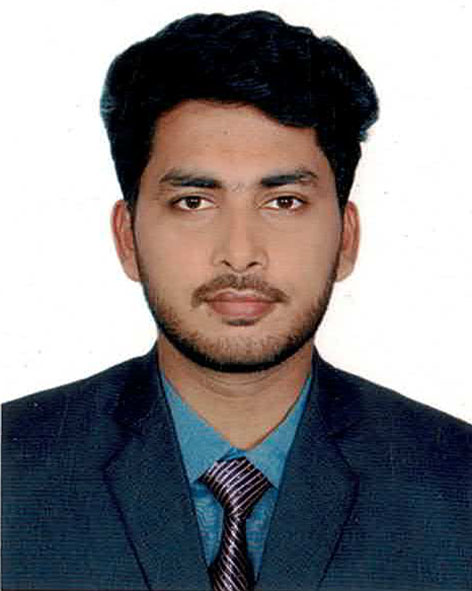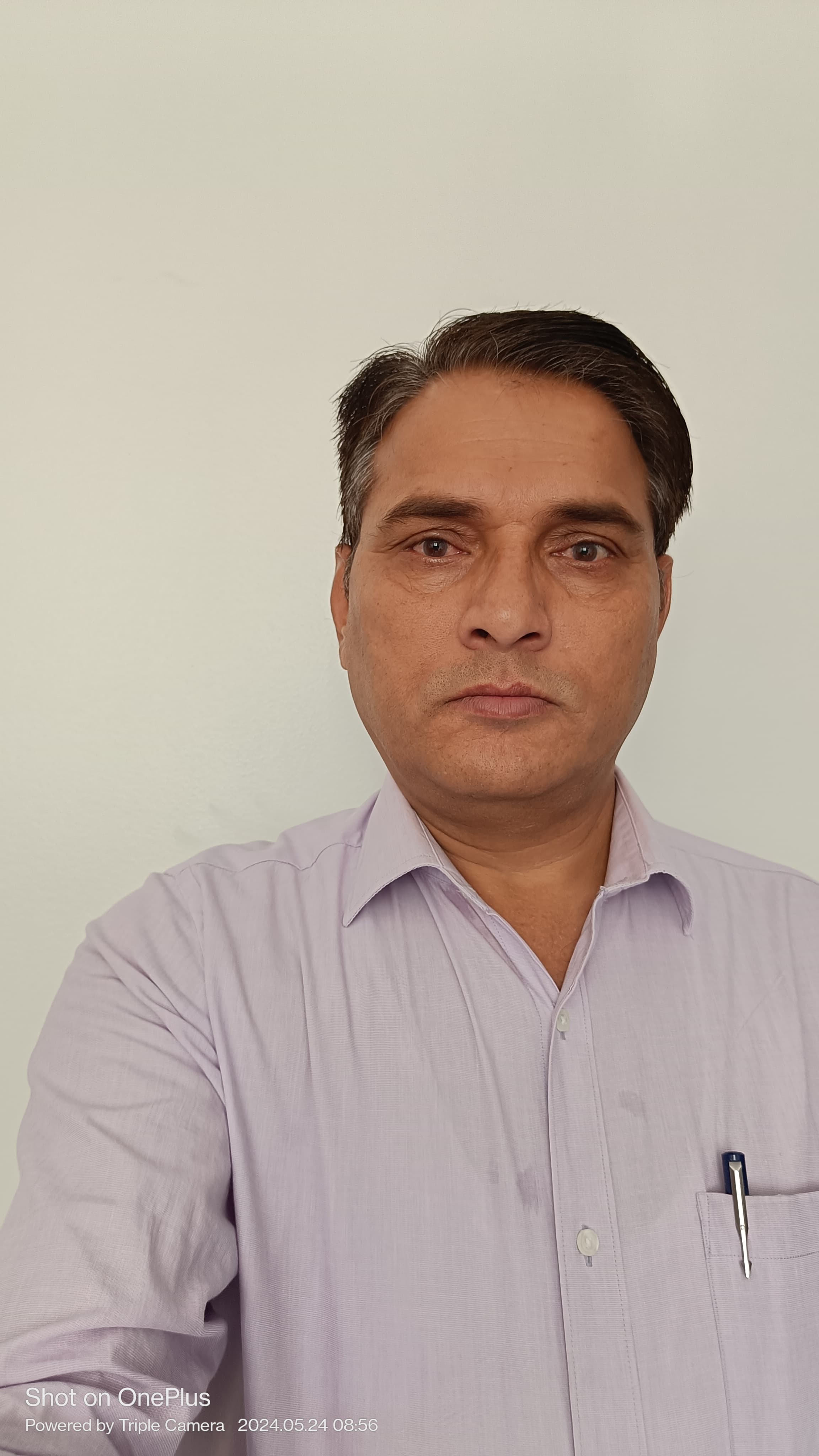Health Sciences Papers & Publications
Muslim heritage in medicine: a concise review on greco-arabic contribution
The presented review was an attempt to share the contribution of Greco Arabic Muslim scientists in the field of medicine. In this regard, al-Andalusi, al-Antaki, al-Baghdadi, al-Jawhari, al-Kindi, al-Nafis, alRazi, al-Tabari, al-Zahrawi, Ibn Abdallah Ibn Idris al Qurtubi, Ibn al-Jazzar, Ibn al-Baitar, Ibn alHaitham, Ibn El-Quff, Ibn Haiyan, Ibn Sina, Ibn Wahshiyyah and Ibn Zuhr with their contribution has discussed.
Urolithiasis management and treatment: exploring historical vistas of greco-arabic contribution
The purpose of the presenting review was to share the medicinal and surgical contribution of Greco-Arabic Muslim scientists in diagnosis, surgery and natural medicines for managing and treating urolithiasis. The contribution of Al-Antaki, Al-Baghdadi, Al-Baitar, Al-Bokhari, Al-Razi, Al-Zahrawi, Ibn Sina, and Ibn Zuhr was highlighted. The data compilation was preliminary, and much more efforts are still needed to restore the missing continuity in the history of medicine.
Antiurolithiatic plants: formulations used in different countries and cultures
: About 12% of the world population is affected by different forms of urolithiasis, the recurrence rate of which is 47-60% in females and 70-80% in males. According to WHO, 75% of people rely on traditional medicines to prevent and cure different ailments. Similarly, the majority of the world population uses several plants to treat problems related to the urinary tract system, of which urolithiasis is the primary cause. The review aims to collect data on the plants used in different parts of the world and cultures against urolithiasis, including their parts, mode of preparation, dosage, and administration. A literature review was conducted for traditionally used antiurolithiatic plants. The articles mentioning plant, parts, mode of preparation, dose and route of administration were selected. This information was extracted to compose Mono and Polyherbal antiurolithiatic formulations used in Appalachia (a region in the Eastern United States), Canada, India, Iran, Israel, Italy, Jordan, Latin America, Pakistan, Turkey and Yemen. The review provides essential data about plants used as antiurolithiatic in different parts of the world. The information is not only useful for ordinary people but also for the scientific community to carry out further phytochemical, pharmacological and toxicological studies for discovering new, effective, safer molecules against urolithiasis.
Phaseolus lunatus linn: botany, medicinal uses, phytochemistry and pharmacology
The present review shares an updated data on the botany, distribution, traditional medicinal uses, phytochemistry and pharmacology of Phaseolus lunatus L. All provided information was obtained through Google Scholar, Pubmed, Sci Finder, Scirus, Web of Science and library search.
Total, insoluble and soluble oxalate contents of three pakistani legume flours
Oxalate is widely distributed in plant foods as potassium, sodium and ammonium oxalates (water-soluble form) and as insoluble calcium oxalates. Oxalate forms strong chelates with dietary calcium, thus rendering the complex unavailable for absorption and assimilation. It precipitates as insoluble salts accumulating in the renal glomeruli and contributes to the development of renal disorders. The seed flours of Macrotyloma uniflorum (Lam.) Verdc., Phaseolus lunatus Linn., and Phaseolus vulgaris Linn. were investigated for their total, soluble and insoluble oxalate contents by HPLC. The total oxalate content of M. uniflorum, P. lunatus and P. vulgaris was 1.24, 1.77 and 1.71 mg/ g, respectively. The %age of soluble oxalate were M. uniflorum (19.50), P. lunatus (15.08) and P. vulgaris (15.88). Only soluble oxalate is responsible for oxalate absorption (bioavailability) and its excretion. Overall, the total oxalate content is high in legume flour of M. uniflorum, P. lunatus, and P. vulgaris, but the soluble oxalates are very low. Therefore, all these three legumes don't have the adverse effects of oxalate on minerals bioavailability and risk of urolithiasis.
A study on the utilization and health services provision by community clinics of jashore, bangladesh
Background: As Bangladesh has gained the reputation of improving the health sectors, much health related sites still require improvements. Community clinic services (CCS) may contribute to this sector with its foremost importance. So this study was conducted to investigate the utilization and health services provision by community clinics (CCs) in rural area. Methods: A descriptive longitudinal study was conducted among three community clinics of Jashore and a structured questionnaire was developed on which most of the questions were developed to find out the contributions of these community clinics. Here for data analysis we used SPSS version 25.0 software. Results: Here we analyzed health service related data from three randomly selected community clinics (CCs). We found an average of 15 patients got antenatal care every month by the Komlapur CC throughout the year. About 140 patients received health services per month from Dogachiya CC. About 634 children were benefited by Saziyali CC throughout the year. By this study we came to know that average 67-75 patients were provided iron supplementations each month by Saziyali CC. All of the CCs had active referral system and online reporting system. Conclusion: From our study we came to know that majority % of rural people are now dependent on community health care services. But most of the community clinics have many limitations regarding infrastructure, training, medicines, financial etc. So the government should take necessary steps regarding this.
Assessment of dietary habits, nutritional status and common health complications of older people living in rural areas of bangladesh
Background: Old age is one of the vulnerable and prone stages in terms of health status. So this study aimed to assess the nutritional status and common health complications of older people. Methods: Simplified Nutritional Appetite Questionnaire (SNAQ), Anthropometric measurements, Diet History Method, and Mini Nutritional Assessment (MNA) tools were used to measure the nutritional status. Data were analyzed by using Statistical Package for Social Science (SPSS) version 16. Results: Out of the total 320 elderly participants the mean SD value for the age of male and female was 67.25 6.5 and 67.32 7.7 years respectively. According to BMI classification, it was noticed that with advancing age the percentage of underweight was also increased such as for 60–75 years old age group the underweight percentage was 30.0% where for 76 to 85 and >85 years old age group the underweight percentage was 45.0% and 60.0% respectively. According to the MNA score, 97 elderly respondents were malnourished and a total of 172 respondents had SNAQ scores below 14. This study found a statistically significant (P < 0.05) correlations among various health complications with nutritional status according to MNA score. In addition 56.6% (OR ¼ 1.24, 95% CI ¼ .799–1.939), 63.8% (OR ¼ 1.18, 95% CI ¼ .745–1.857) and 64.7% (OR ¼ 1.14, 95% CI ¼ .720–1.804) respondents had diabetes mellitus, hypertension and cardiovascular disease respectively. The risk of musculoskeletal pain (OR ¼ 1.073, 95% CI ¼ .684–1.681), bedsore (OR ¼ 1.884, 95% CI ¼ .903–3.934) and decreased sense of thirst (OR ¼ 1.278, 95% CI ¼ .821–1.991) were higher among females than males. A little number of the elderly used to take milk, meat, and fish daily. Conclusion: During this cross-sectional study, significant correlations among nutritional changes with health complications were determined. To prevent malnutrition among the elderly a proper health policy as well as periodical nutritional screening should be conducted
Role of pharmacy students in fostering rational use of dietary supplements: knowledge, attitude, and practice study
Dietary supplements are extensively consumed, but irrational use is a health hazard. Pharmacy students, being future healthcare providers, can facilitate rational use. The present study evaluated the knowledge, attitudes, and practices of pharmacy students at Srinivas College of Pharmacy, Mangalore, about dietary supplements and their role as an advocate, in addition to mental health correlations. 250 students selected through stratified random sampling took part in a cross-sectional mixed-methods study. A 30-question instrument (Cronbach's alpha=0.85) measured demographics, dietary supplement usage, knowledge, attitude, practices, and mental health was evaluated with the depression, anxiety, and stress Scale-21 (DASS-21). The data were collected during January-March 2025 and were analyzed with the chi-square test, logistic regression, and Pearson correlation tests. 35.0% (n=88) used dietary supplements regularly, with a preference for multivitamins (50%) and protein supplements (30%). Knowledge was moderate (60% risk aware), attitudes favorable (70% in favor of counseling), but practice restricted (25% informed peers). Everyday use of dietary supplements escalated stress probability (OR=2.5, 95% CI: 1.8-3.4, p<0.001), with correlation (r=0.38, p<0.01). In conclusion, students have promise as dietary supplement champions but require additional training to close knowledge-practice gaps and mitigate mental health risks. Curriculum and policy interventions are needed to enhance students' abilities in encouraging rational dietary supplement use and identifying potential mental health effects.
 Mediterranean Journal of Pharmacy and Pharmaceutical Sciences
Mediterranean Journal of Pharmacy and Pharmaceutical Sciences
Correlation between physical activity and stress levels in allied health science students during examination periods
Background: Allied health science students often experience elevated academic stress due to the demanding nature of their curricula, which blend theoretical instruction with clinical practice. Examination periods, in particular, exacerbate psychological pressure, potentially compromising academic performance and overall well-being. Physical activity (PA) has been widely recognized for its protective role against stress, yet limited research has been conducted specifically among allied health science students. This study examined the correlation between physical activity and perceived stress levels among undergraduate allied health students during examination periods at Desh Bhagat University. Methods: A descriptive cross-sectional correlational study was conducted over eight weeks, from October to November 2024. 250 undergraduate students were proportionately and randomly selected from the Nursing, Physiotherapy, Radiography, and Medical Laboratory Science departments. Data collection instruments included the International Physical Activity Questionnaire–Short Form (IPAQ-SF) and the Perceived Stress Scale (PSS-10). Descriptive statistics, Pearson’s correlation, and one-way ANOVA were performed using SPSS version 25 to analyze the data. Results: Out of 250 questionnaires distributed, 237 were deemed valid for analysis. Among the respondents, 40.9% reported low physical activity, 38.4% moderate, and 20.7% high. In terms of stress levels, 65.4% experienced moderate stress, and 19.4% reported high stress. A statistically significant negative correlation was observed between physical activity and perceived stress (r = -0.42, p < 0.001). Furthermore, one-way ANOVA revealed that students with higher physical activity levels had significantly lower stress scores (F = 18.93, p < 0.001). Conclusion: Physical activity is an effective non-pharmacological strategy for mitigating academic stress among allied health science students. The results highlight the importance of promoting regular physical activity, particularly during high-stress academic periods, as a means of enhancing mental well-being and academic success.
A study on psychosomatic problems related to the problematic internet use among adolescents at selected schools of aspur block, dungarpur
Adolescents’ scholastic and social life has become increasingly reliant on the internet and mobile technology in recent years. Problematic Internet Use (PIU) is a growing problem in Indian adolescents. However, in many cases, this use has become obsessive, causing them to neglect other elements of their lives. Adolescents account for over 35% of internet users in India. The purpose of this study was to evaluate the psychosomatic problems related to internet overuse among school going adolescent students. This cross-sectional survey was conducted among 348 students in selected schools of Aspur block in Dungarpur-district, Rajasthan, India in the month of February 2016. Problematic internet use (PIU) was assessed by Young’s twenty question internet addiction test. The Depression, Anxiety, Stress Scale (DASS-42) and self structured questionnaire check list was used to measure psychosomatic problems among adolescents. Approximately 5.17% adolescents showed Problematic internet use (PIU). Adolescents with PIU were associated with age between 14-16 year, males,10th class of study, using internet since more than 3 years, being at home, mobile as a source of internet use, purpose of internet use with online gaming. Compared with normal internet users, there were significant correlation between Problematic Internet Use and Somatic Complaints r=0.3660, p<0.05, Depression r=0.3982, p<0.05. Anxiety r=0.2512, p<0.05 and Stress r=0.2886, p<0.05. Problematic internet use (PIU) is an increasing problem among teenagers and it has been linked to psychosomatic issues. Timely Effective measures are needed to prevent the spread of this problem
Welcome letter from yemen journal of medicine
The past few decades have witnessed several attempts to establish renowned medical journals in the Republic of Yemen. Some of these initiatives were successful but fell short of the researchers’ expectations, because they failed to meet international standards of scholarly writing in the medical field. Recently, the civil war has dashed any hopes of launching such a journal from within the country. We believe that this is the right time to establish a new peer-reviewed medical journal of high standards which meet the expectations of all Yemeni researchers across the board, from both within and outside the country. As a result of enormous efforts, discussions, and extensive collaboration, we have now been able to finalize the structure and content of the Yemen Journal of Medicine (YJM). Files
Over population and associated risks: an epidemiological survey
Overpopulation is a global problem which affects almost everyone in the globe by reducing the available natural resources in the existence. An epidemiological survey was conducted with the aim to assess the people’s response towards overpopulation and its harms to them. The study was conducted based upon descriptive survey design using interview method. The study comprises 80 people residing in selected rural area. The data was collected based on purposive sampling using checklist. The study reveals that most of the people are residing by doing unskilled work due to unemployment with poor living standard.
Jacques Bazemon
Université Nazi Boni
Dr. Md Manzar Alam
Central Council For Research In Unani Medicine, Ministry Of Ayush, Government Of India, New Delhi
Most Popular Category
- Pharmacy (270)
- Education and social science (224)
- Pharmacology (220)
- Pharmacognosy (178)
- Business management (147)
- Pharmacology and toxicology (133)
- Pharmaceutical sciences (130)
- Education and training (129)
- Medicine (124)
- Research (123)
- Health Science (100)
- Management (98)
- Biological Sciences (97)
- Computer Science (92)
- Computer Science Applications (85)
- Public health (83)
- Human resource management (83)
- Engineering (77)
- Accounting and finance (73)
- Information technology (68)
 Dr. Salman Ahmed
Dr. Salman Ahmed  Arafat Hassan Razon
Arafat Hassan Razon  Dr K C Yadav
Dr K C Yadav  NEERAJ KUMAR BANSAL
NEERAJ KUMAR BANSAL